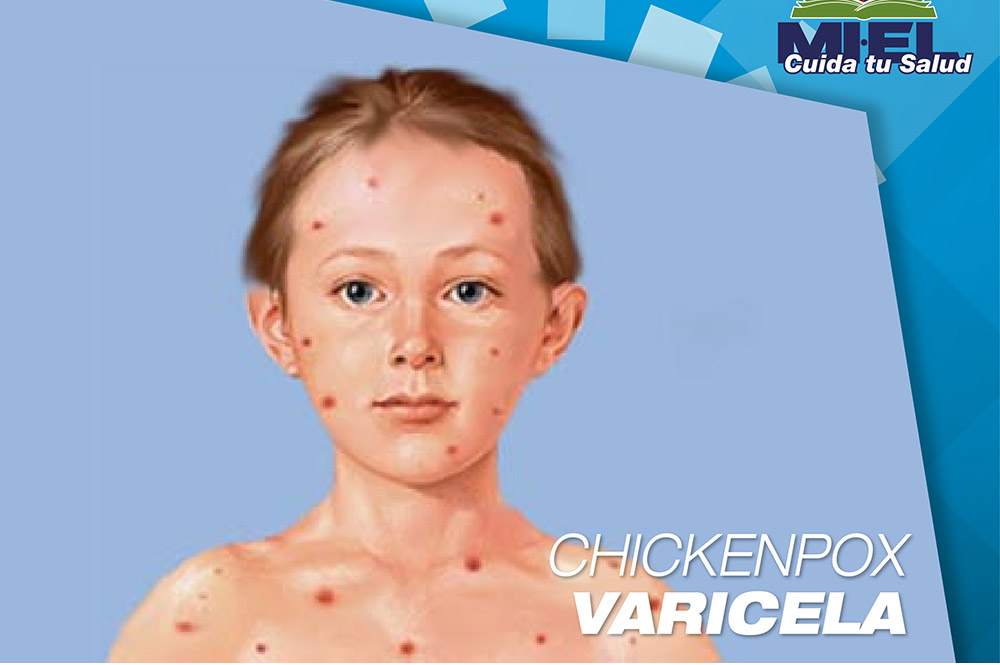Chickenpox, also known as varicella, is a relatively benign disease, although sometimes can cause serious problems. It is caused by the varicella-zoster virus, very common in childhood, known for lesions in the form of small blisters.
The disease has an incubation period ranging from 10 to 21 days. During these days the child may show general discomfort and fever. After the incubation stage, the rash turns into fluid-filled blisters and eventually into scabs. It usually shows up on the face and chest, and then spreads to the rest of the body, sometimes in the buccal and genital mucosa too.
The classic symptom of chickenpox is an uncomfortable, itchy rash, and the person can also complains of headache, fever, and loss of appetite. It is highly contagious, it can be transmitted through the respiratory droplets that we expel when talking, coughing, and sneezing, and also by contact.
Chickenpox is spread during the incubation process, before the rash appears, and stops being contagious when all lesions turn into scabs. For this reason, it is recommended that until the skin lesion is completely dry, students are not taken to school to avoid contagion.
It is also recommended to take your child to the Pediatrician to receive the correct guidance on the treatment and special care that should be applied.
La varicela es una enfermedad relativamente benigna, aunque en ocasiones puede llegar a complicarse. Es ocasionada por un virus llamado varicela-zóster, muy frecuente en la infancia, conocida por lesiones en forma de pequeñas ampollas o vesículas.
La enfermedad tiene un periodo de incubación que va desde los 10 a los 21 días. Durante estos días el niño puede mostrar malestar general y un poco de fiebre. Pasada la etapa de incubación, surge la erupción en la cara y el tronco, para luego aparecer en todo el cuerpo, en ocasiones en la mucosa bucal y genital, mostrándose como ampollas, que luego se secan dejando una costra. Es importante hacer notar que estas producen picor. La persona se queja de cefalea (dolor de cabeza), fiebre, inapetencia o pérdida del apetito. Es altamente contagiosa, se transmite por el aire, por las gotas respiratorias que expulsamos al hablar, toser, estornudar y también por el contacto de la piel.
Esta se contagia en el proceso de incubación, antes que aparezcan las lesiones cutáneas, y deja de ser contagioso cuando todas las lesiones de la piel están en forma de Costra o secas. Por esta razón, se recomienda que hasta que la lesión cutánea esté totalmente seca no se lleven los estudiantes a la escuela para evitar el contagio.
Se recomienda además llevar a su hijo al Pediatra para recibir las orientaciones de lugar sobre el tratamiento y el cuidado especial que se debe aplicar.
[ngg_images source=”galleries” container_ids=”17″ exclusions=”” display_type=”photocrati-nextgen_basic_slideshow” gallery_width=”600″ gallery_height=”400″ cycle_effect=”fade” cycle_interval=”5″ show_thumbnail_link=”0″ thumbnail_link_text=”[Show thumbnails]” order_by=”sortorder” order_direction=”ASC” returns=”included” maximum_entity_count=”500″]






